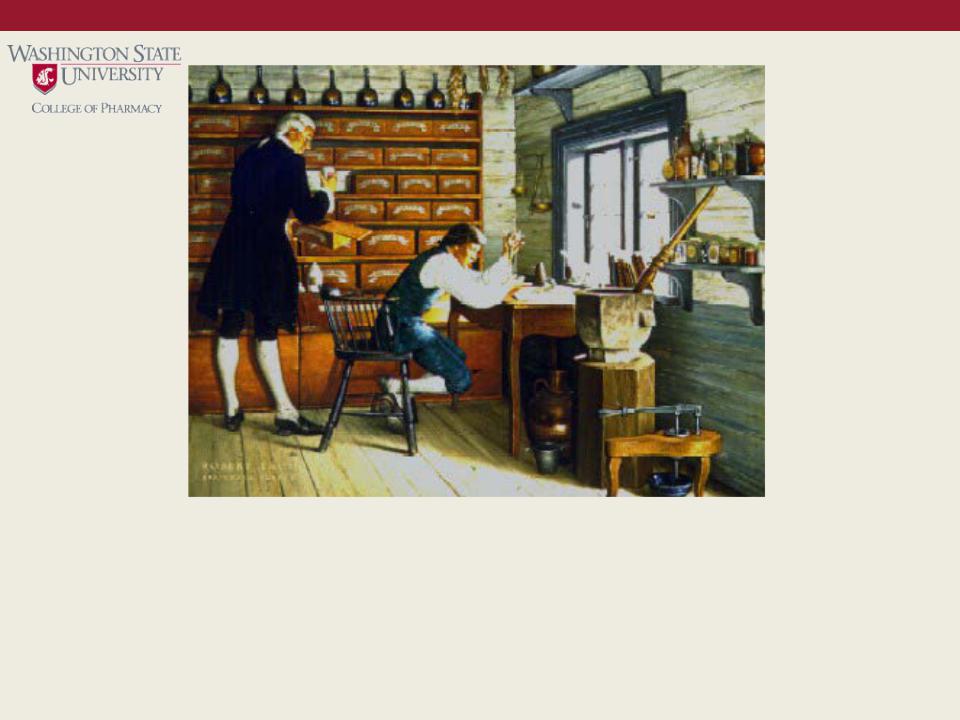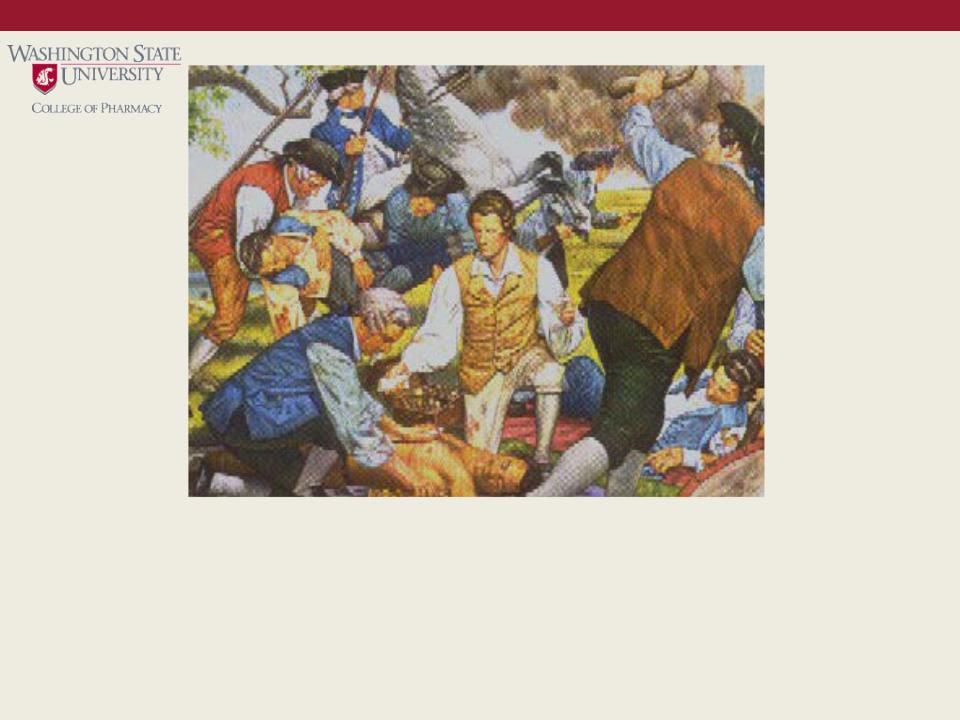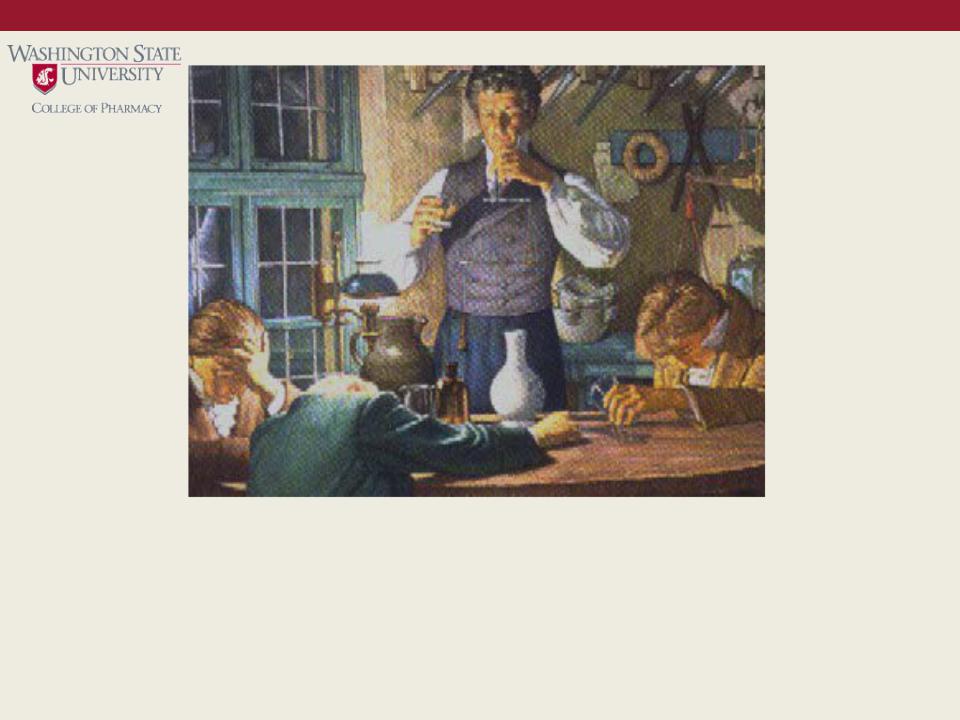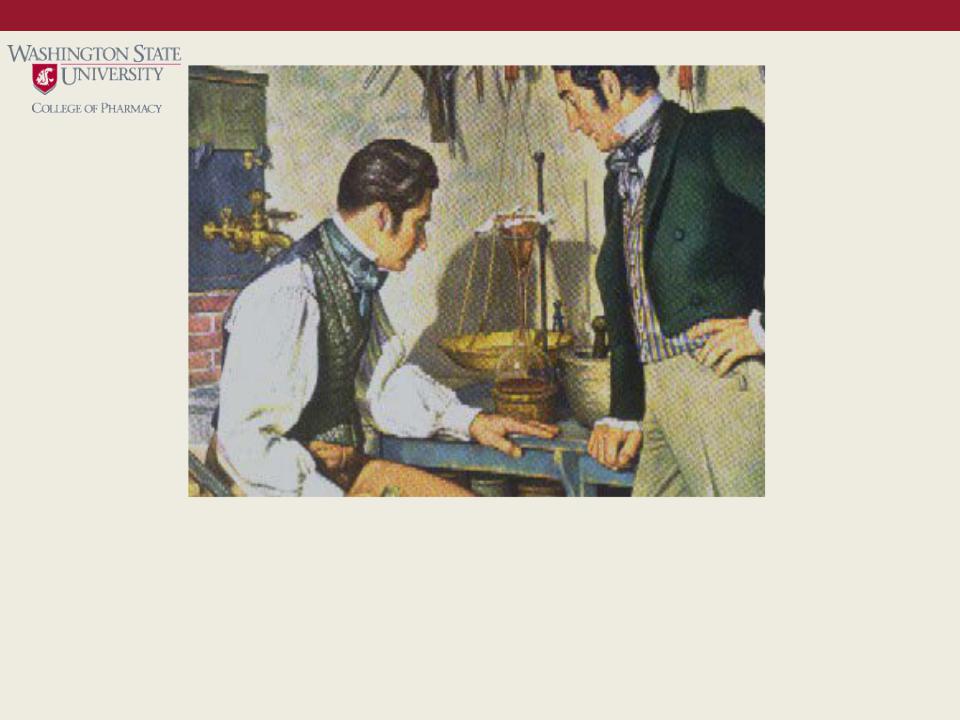
- •1. Before the Dawn of History
- •2. Pharmacy in Ancient Babylonia
- •3. Pharmacy in Ancient China
- •4. Days of the Papyrus Ebers
- •5. Theophrastus – Father of Botany
- •6. The Royal Toxicologist – Mithridates VI
- •7. Terra Sigillata – An Early “Trademarked” Drug
- •8. Dioscorides – A Scientist Looks at Drugs
- •9. Galen – Experimenter in Drug Compounding
- •10. Damian and Cosmas – Pharmacy’s Patron Saints
- •11. Monastic Pharmacy
- •12. The First Apothecary Shops
- •13. Avicenna – The “Persian Galen”
- •14. Separation of Pharmacy and Medicine
- •15. The First Official Pharacopeia
- •16. The Society of Apothecaries of London
- •17. Louis Hébert, Apothecary to New France (Canada)
- •18. The Governor who Healed the Sick
- •19. The Marshall Apothecary
- •20. First Hospital in Colonial America
- •21. Scheele – Greatest of the Pharmacists-Chemists
- •22. Craigie – America’s First Apothecary General
- •23. Sertürner – First of the Alkaloid Chemists
- •24. Caventou, Pelletier and Quinne
- •25. American Pharmacy Builds its Foundations
- •26. The Shakers and Medicinal Herbs
- •27. The American Pharmaceutical Association
- •28. European and American Pharmacy Meet
- •29. The Father of American Pharmacy
- •30. A Revolution in Pharmaceutical Education
- •31. The Pharmacopeia Comes of Age
- •32. The Standardization of Pharmaceuticals
- •33. Wresting the Jungle’s Secrets
- •34. Stanislas Limousin – Pharmacal Inventor
- •35. The Era of Biologicals
- •36. The Development of Chemotherapy
- •37. Pharmaceutical Research
- •38. Pharmaceutical Manufacturing Comes of Age
- •39. The Era of Antibiotics
- •40. Pharmacy Today and Tomorrow

21. SCHEELE – GREATEST OF THE PHARMACISTS-CHEMISTS
During his few short years, Carl Wilhelm Scheele gave to the world discoveries that have brought its people incalculable advantages. Yet he never forgot that he was, first of all, a pharmacist. Encouraged by enlightened preceptors, all of his discoveries were made in the Swedish pharmacists in which he worked, as apprentice, as clerk, and finally as owner, in Köping. He began in a corner of the stock room of Unicorn Apothecary in Gothenburg. With rare genius, he made thousands of experiments, discovered oxygen, chlorine, prussic acid, tartaric acid, tungsten, molybdenum, glycerin, nitroglycerin, and countless other organic compounds that enter into today's daily life, industry, health, and comfort.

22. CRAIGIE – AMERICA’S FIRST APOTHECARY GENERAL
During his few short years, Carl Wilhelm Scheele gave to the world discoveries that have brought its people incalculable advantages. Yet he never forgot that he was, first of all, a pharmacist. Encouraged by enlightened preceptors, all of his discoveries were made in the Swedish pharmacists in which he worked, as apprentice, as clerk, and finally as owner, in Köping. He began in a corner of the stock room of Unicorn Apothecary in Gothenburg. With rare genius, he made thousands of experiments, discovered oxygen, chlorine, prussic acid, tartaric acid, tungsten, molybdenum, glycerin, nitroglycerin, and countless other organic compounds that enter into today's daily life, industry, health, and comfort.

23. SERTÜRNER – FIRST OF THE ALKALOID CHEMISTS
Swedish pharmacist Scheele paved the way for isolating organic plant acids; but it remained for a young German apothecary, Friedrich Wilhelm Adam Sertürner, to give the world opium's chief narcotic principle, morphine; and to recognize and prove the importance of a new class of organic substances: alkaloids. His first announcements challenged, Sertürner in 1816 conducted a new series of bold, startling experiments in his apothecary shop in Einbeck, including a series of physiologic tests on himself and three young friends. Recognition and fame followed. Relocating in an apothecary shop in Hameln, Sertürner continued organic chemical experimentation and discovery throughout his life.

24. CAVENTOU, PELLETIER AND QUINNE
Taking their cue from Sertürner's alkaloidal experiments, two French pharmacists, Messrs. Pierre-Joseph Pelletier and Joseph-Bienaimé Caventou, isolated emetine from ipecacuanha in 1817; strychnine and brucine from nux vomica in 1818; then, in their laboratory in the back of a Parisian apothecary shop, they tackled the problem that had baffled scientists for decades - wresting the secrets of the Peruvian barks that were so useful against malaria. In 1820 Caventou and Pelletier announced the methods for separation of quinine and cinchonine from the cinchona barks; prepared pure salts, had them tested clinically, and set up manufacturing facilities. Many other discoveries came from their pharmacy-laboratory; high honors were accorded them.
